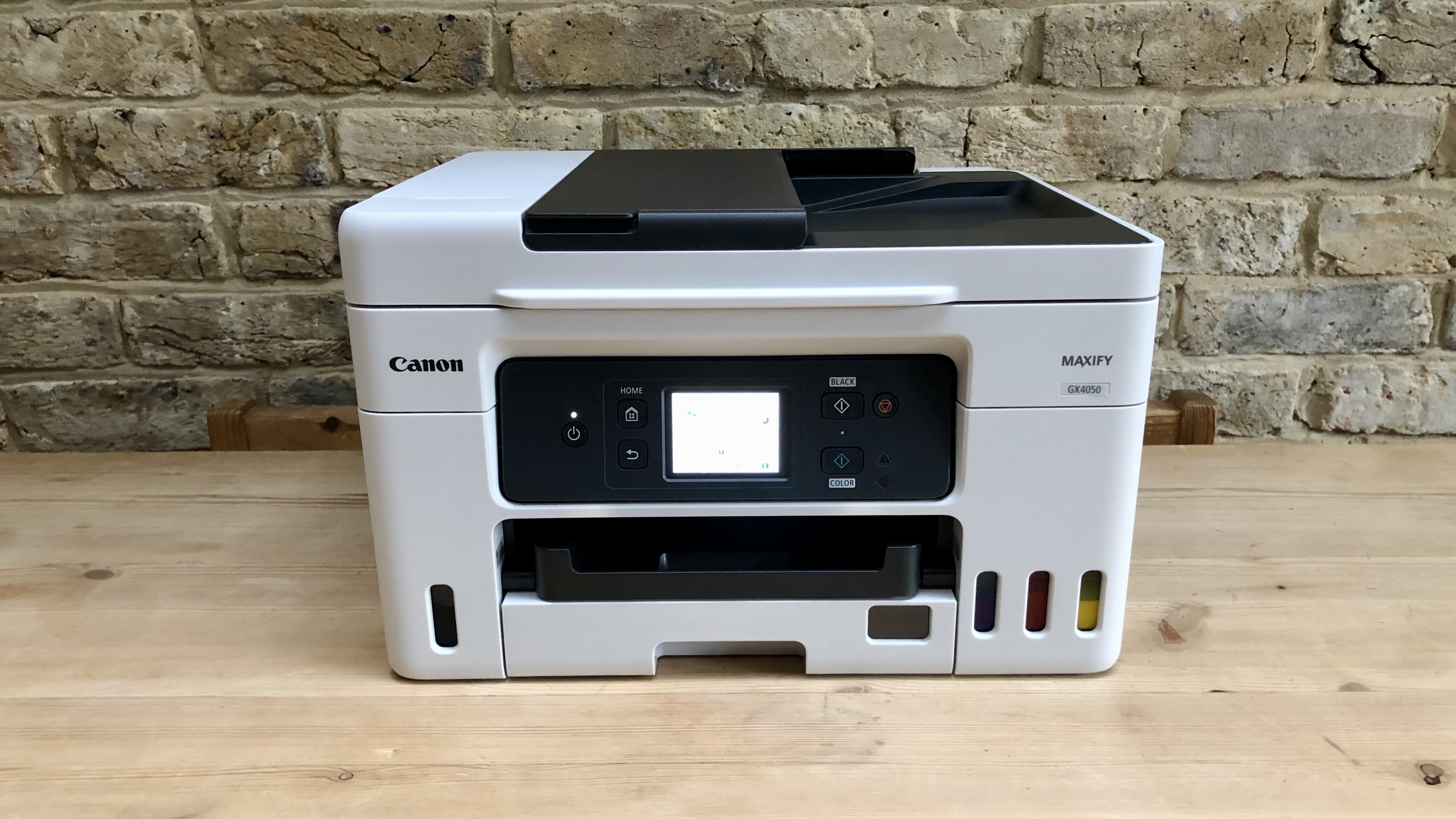TechRadar Verdict
Canon’s mid-price MAXIFY gets the features/cost/size ratio just right for the small office. It’s not as fast as a laser, but this refillable inkjet prints on a wider variety of blank media at a lower cost per page.
Pros
- +
High ink/paper capacity
- +
Prints on card
- +
Lots of inbox ink
- +
Three paper trays
Cons
- -
Expensive
- -
Not fast
- -
No USB Host port
- -
No NFC
Why you can trust TechRadar
The Canon MAXIFY GX4020 (US) / GX4050 (UK) / GX4060 (Australia) is an all-in-one printer aimed at the busy home office or SMB. It’s a MegaTank model, so you’re not locked into expensive cartridges and it comes with plenty of ink in the box. It includes all the tools needed for business too, with an ADF (automatic document feed), fax facility and ample paper capacity all rolled into a compact desktop design.
Type: 4-in-1 color A4 inkjet printer
Functions: Print, scan, copy, fax
Connectivity: Ethernet, USB, Wi-Fi
Data storage slots: none
Print speed: 18ppm (mono)
Paper capacity: 250 + 100 sheets
Print quality: 600 x 1,200 dpi
Scan quality: 1,200 x 2,400 dpi
Apple AirPrint: yes
Consumables included: 4x ink bottles 5,000 mono, 5,000 colour (US) / 6,000 mono, 14,000 color (UK)
Dimensions/Weight: 399 x 417 x 251 mm (WxDxH)/9.5kg
It cannot keep up with a laser printer when it comes to print speed, but its bottled ink is cheaper than toner and Canon reckons it can work as hard as a laser quoting a monthly duty cycle of up to 33,000 pages.
One major advantage this inkjet has over laser is its ability to handle a very diverse range of media. Thanks to an additional flat feed input at the rear you print on thick card as well as square coated paper, fabric and magnetic photo paper.
At around US$500/£430/AU$769, the GX4020/GX4050/GX4060 is the more expensive of two GX MAXIFY models lately added to Canon’s expanding MegaTank range. The price includes a generous amount of ink (enough for 5,000 mono and 5,000 color pages in the US, or 6,000 mono and 14,000 color pages with the UK model).
But if you don’t need the ADF, Fax or touchscreen interface, you can save money by choosing the step-down GX3020/GX3050/GX3060.
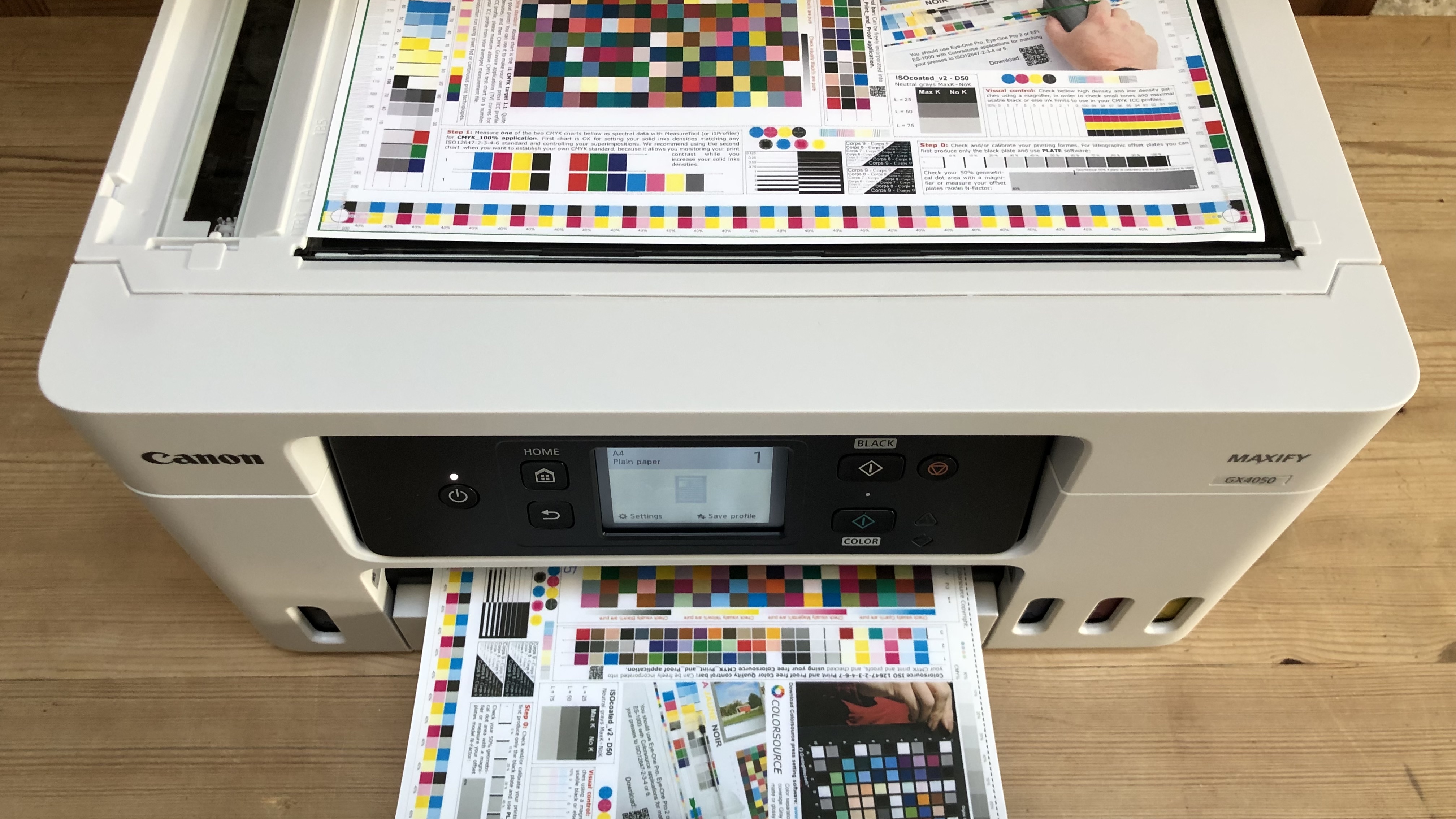
Canon MAXIFY GX4020: Design and build
Canon’s current GX MAXIFY range already has a satisfyingly solid design, but the new GX4020/GX4050/GX4060 is an improvement. The tilting two-line display has been replaced with a proper touchscreen fixed into the front panel for an even more robust look. It’s certainly easier on the eye than your average business printer.
For an all-in-one packing a 250-sheet paper tray and a 100-sheet ADF, it’s quite compact too. The four large ink reservoirs are neatly integrated so that you can see exactly how much ink is left in the tank, while another window into the main paper tray reveals your remaining paper. All the corners are nicely rounded off and the white plastic panels feel solid.
Sign up to the TechRadar Pro newsletter to get all the top news, opinion, features and guidance your business needs to succeed!
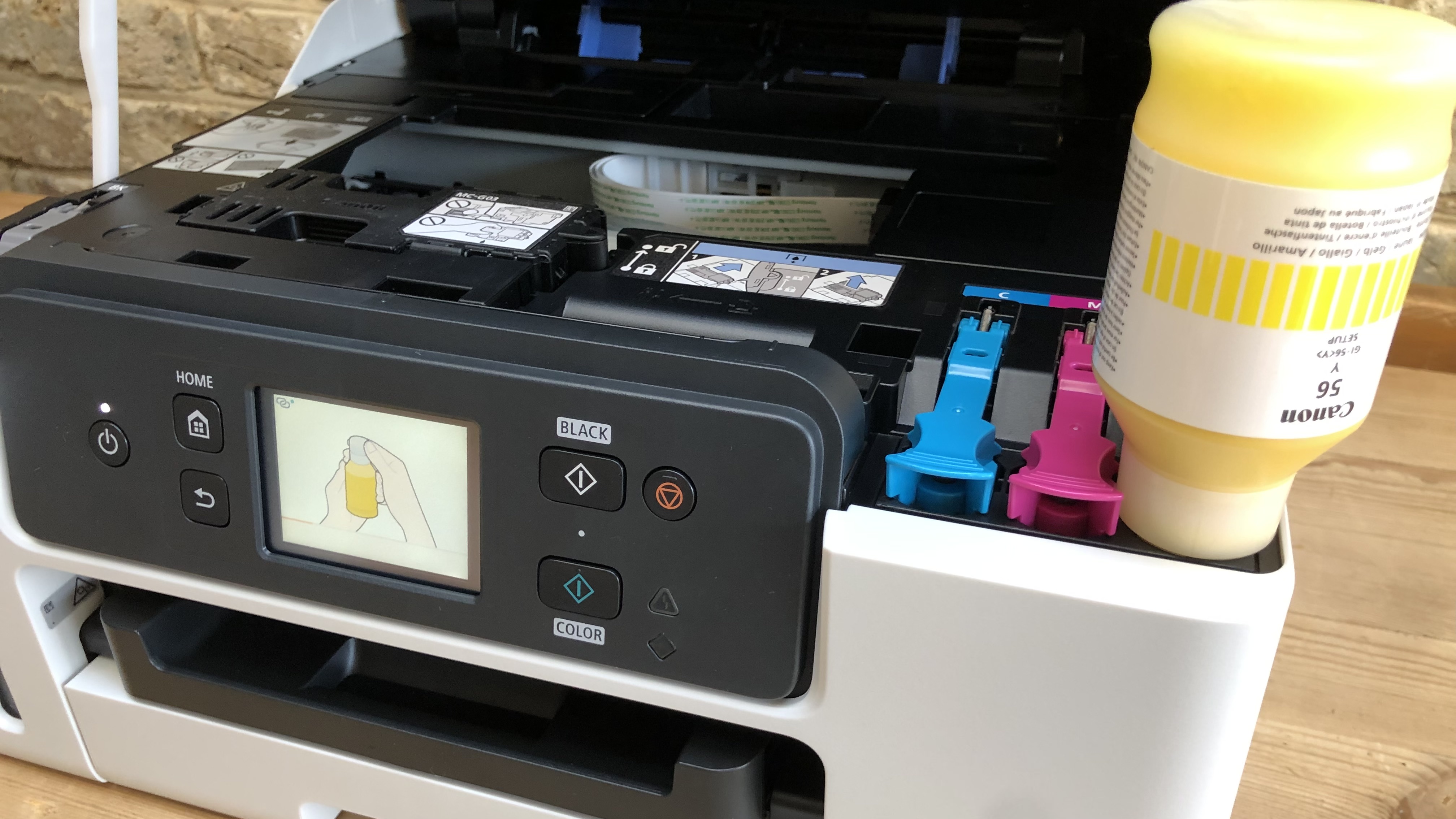
But the most ingenious piece of design, in our view, is the rear flat tray. This third intake slot offers a completely flat paper path through the printer enabling it to print on hard Paperboard or card stock up to 0.7mm thick. This key feature is absent from existing models like the Canon MAXIFY GX5020/GX5050/GX5060 and provides a compelling reason to upgrade.
At the rear you’ll find connections for a USB data cable, Ethernet cable and two more for the fax modem. The only port missing is USB Host, which would have been useful for walk-up printing from a USB thumb drive. It’s a surprising omission given the premium price tag.
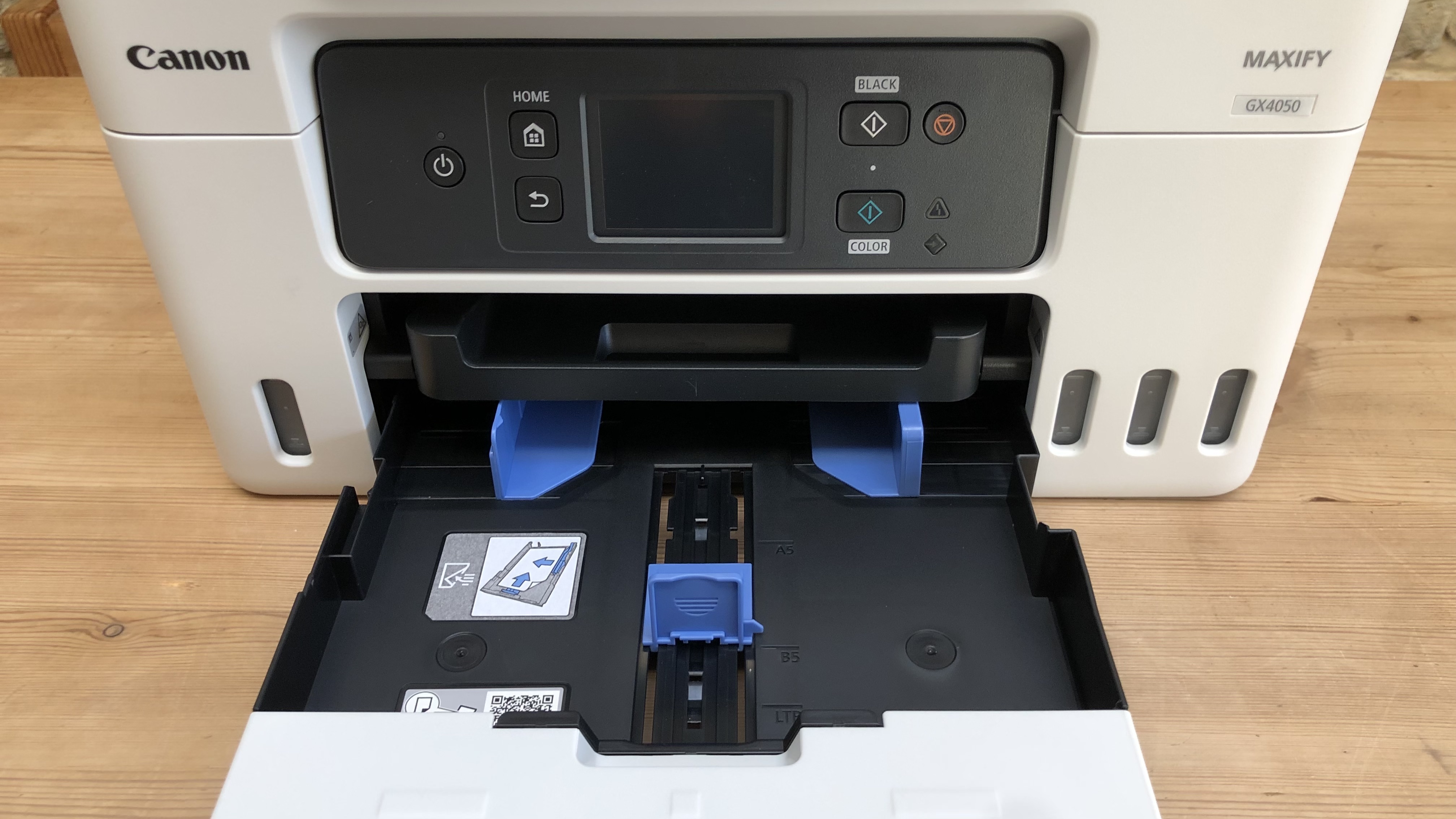
Canon MAXIFY GX4020: Features and specifications
The Canon MAXIFY GX4020/GX4050/GX4060 is a four-in-one printer, which is to say that it can print, scan, copy and fax, but it can do more than that. Wi-Fi is built in and is compatible with Apple AirPrint Wireless Direct and PIXMA Cloud Link. It has a 35-sheet ADF for copying a stack of pages which it can duplex copy, but not auto-duplex scan, meaning you have to turn the page yourself to copy the other side.
It can auto-duplex print, of course, and simplex print in mono quite quickly at 18ppm (pages per minute). Color pages take longer at 13ppm, so it cannot compete with laser printers on speed. This printer’s strong suits are paper capacity (250-sheet main tray, plus 100-sheet multifunction tray) and ink capacity.

Fill the tanks with four standard size ink bottles and you can print up to 9,000 mono pages and 21,000 pages in economy mode. Even in standard quality mode, that beats most laser printers on cost-per-page.
When it comes to paper compatibility, the GX4020/GX4050/GX4060 is not at all fussy. It can print on any size paper up to A4, including envelopes stickers and coated photo paper. Canon sells a wide variety of printable media from fabric patches to magnetic photo paper and they are all compatible. This printer was also the first to pass our heavy card test by successfully printing onto 0.7mm paperboard, thanks to that rear flat tray. There’s no USB Host port, sadly, and no NFC reader, but apart from that, this is a well-equipped business printer.
Canon MAXIFY GX4020: Setup and operation
The quick setup guide that accompanies this printer is the briefest one-page manual we’ve ever seen, but it’s all you need. Just turn the printer on and its display will prompt you to fill the paper tray and ink reservoirs. Thanks to the individually shaped mouths of the four ink bottles, it’s impossible to pour in the wrong colors and very hard to spill any. Our UK model came with standard size bottles in the box which completely filled the tanks. In the US, the setup inbox bottles are slightly smaller.
Follow further instructions on the display to get your printer onto your Wi-Fi network, or download the companion app onto your iOS/Android device and use that. The Canon PRINT Inkjet/SELPHY app makes it very easy to use the printer remotely, whether you’re printing files from your phone, or printing/scanning via the cloud.
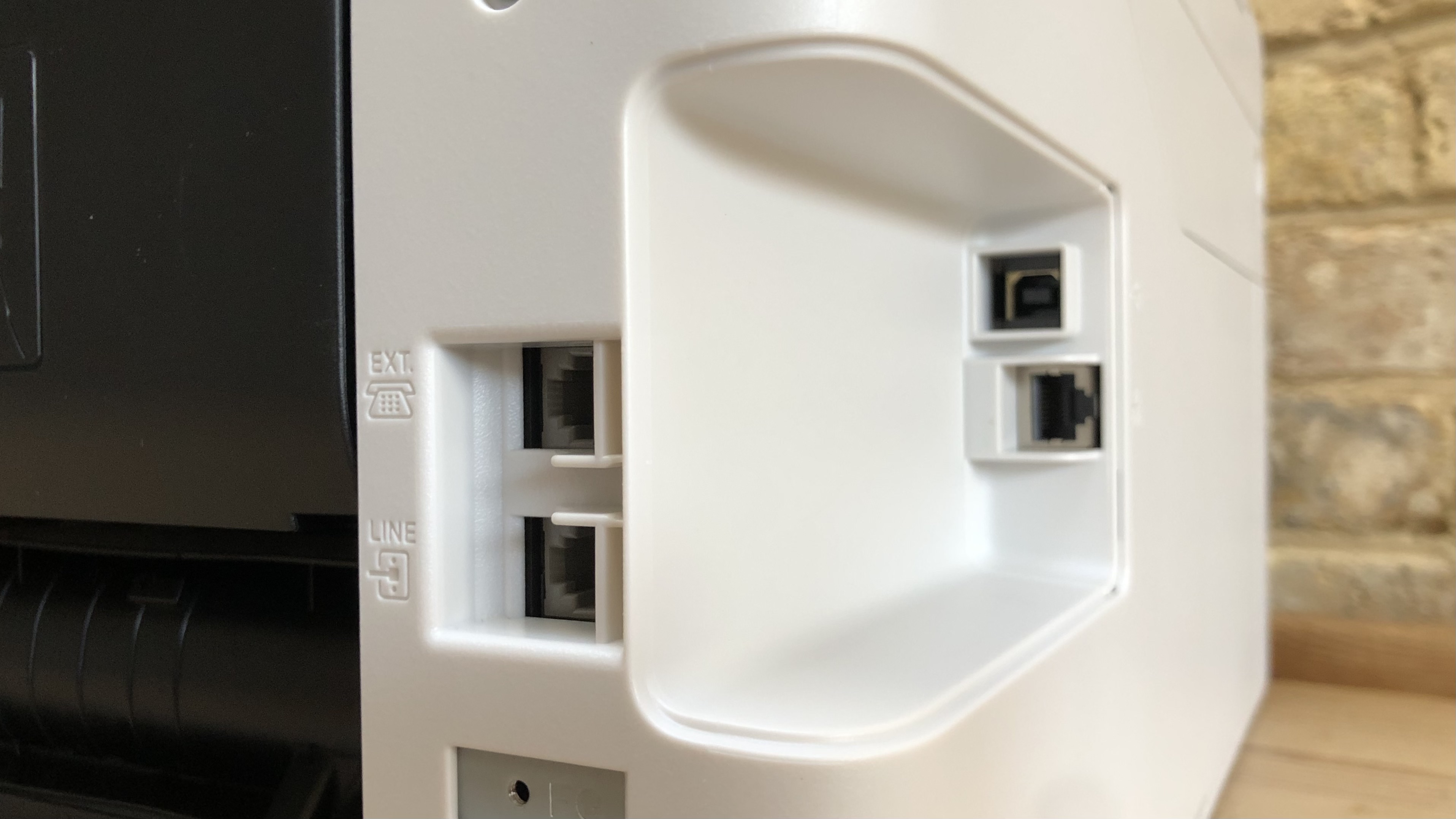
Canon MAXIFY GX4020: Performance
In addition to looking good, the Canon MAXIFY GX4020/GX4050/GX4060 prints well too. The FPOT (first print out time) is around nine seconds for mono or color pages, which is pretty prompt. The print speed is not fast, especially for color pages in duplex mode, but it is reliable. We experienced no paper jams or blank pages during the test.
Pages of plain black text looked very dark and sharp. The results are not as light and precise as you get with laser-printed text, but we found no smudges or gaps when going our these test pages with a magnifying glass. Switching to the faster Draft Mode does introduce very occasional breaks, but also proved it to be a useful feature that will be fine for most print jobs.
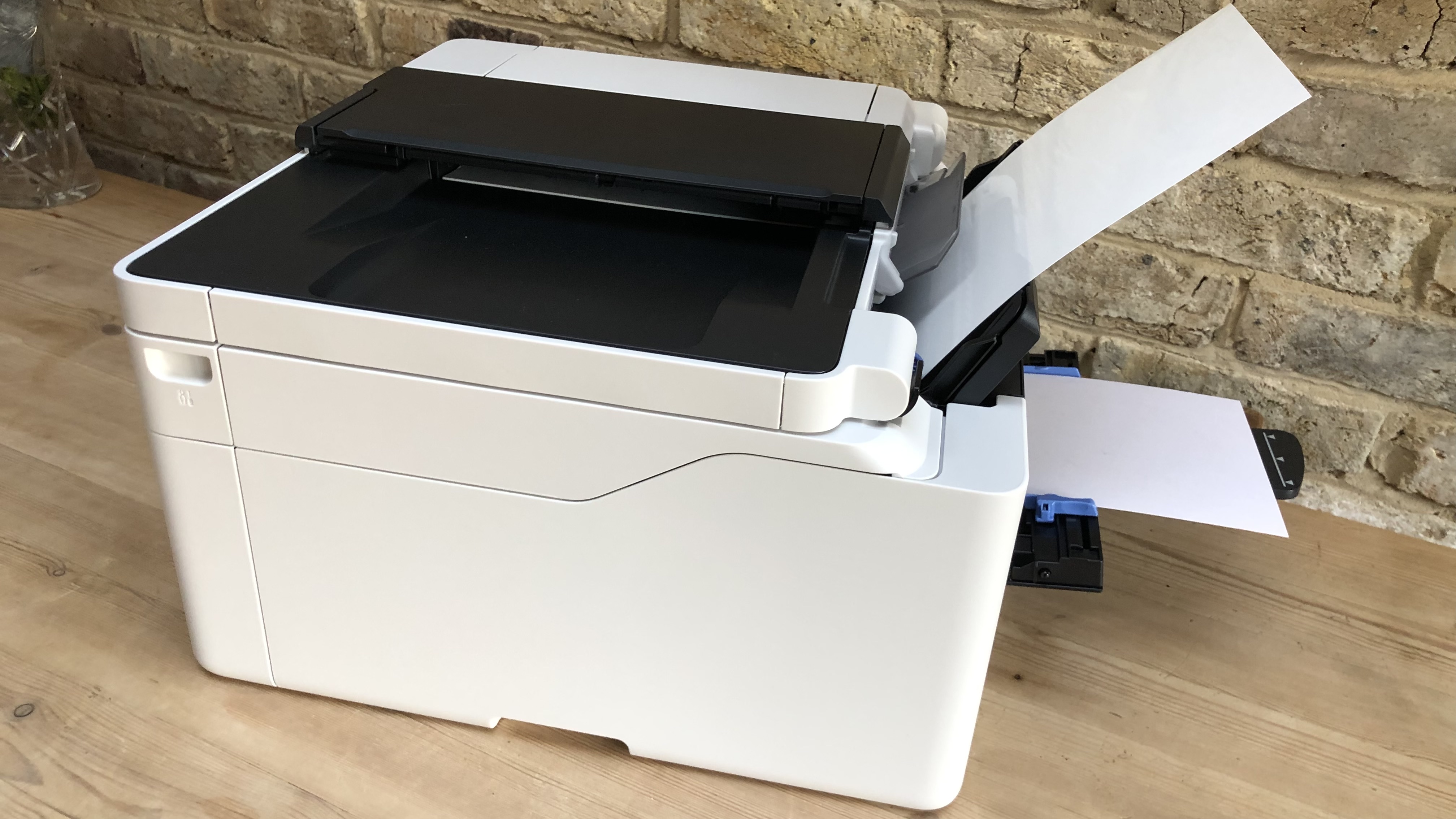
While Canon’s PIXMA inkjet printers combine pigment-based black ink for text output, along with dye-based cyan, magenta, yellow for high-quality photo output, the MAXIFY business printers like this one use all-pigment ink for higher durability. That pay-off is visible here where documents look great and don’t smudge under your fingers, but photos printed on glossy photo paper are somewhat lacking.
The three colored inks are vibrant, making mixed color documents look quite striking. Maps in particular are great for showcasing the bright colors and crisp detail that this printer is capable of. With our London Underground Map test, the station names which are a very small point size (4pt) sometimes run together, but that’s not the case here. There are apparently 4,352 nozzles delivering ink to paper and that seems to be enough.
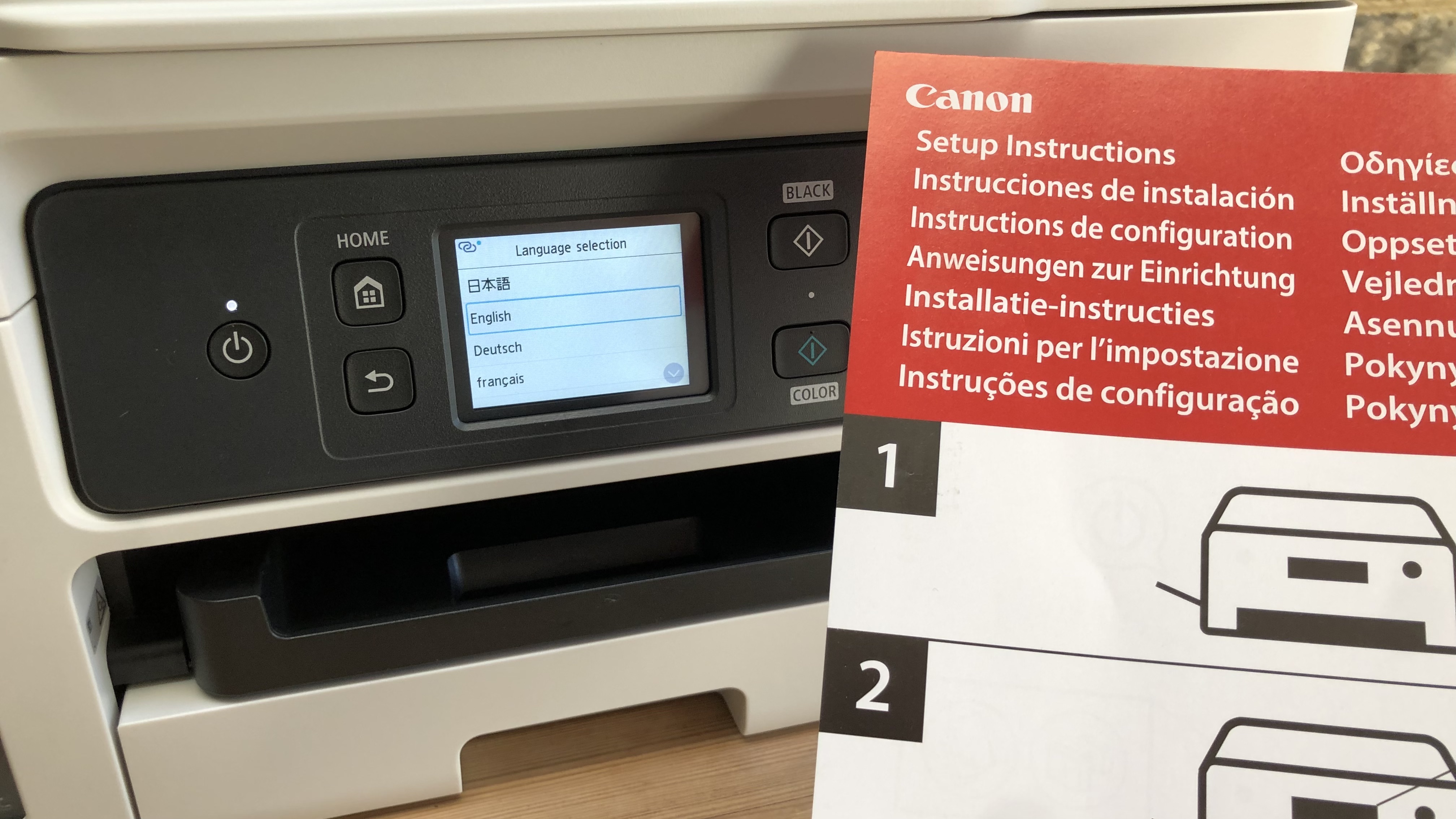
Most of our photos looked fine with impressive attention to detail, but the colors never really popped in the way a dedicated photo printer can manage.
As a copier, this printer was reliable, turning out duplicates almost as bright and crisp as the originals. The scanning resolution is high at 1,200 x 2,400 dpi but the print resolution is only 600 x 1,200 dpi and with no single-pass duplex scan mode, it’s not the best photocopier out there.
Where it outperformed other printers in its class was by successfully printing on everything from envelopes and stickers to heavy paper and paperboard. In summary, the Canon MAXIFY GX4020/GX4050/GX4060 put in a strong all round performance.
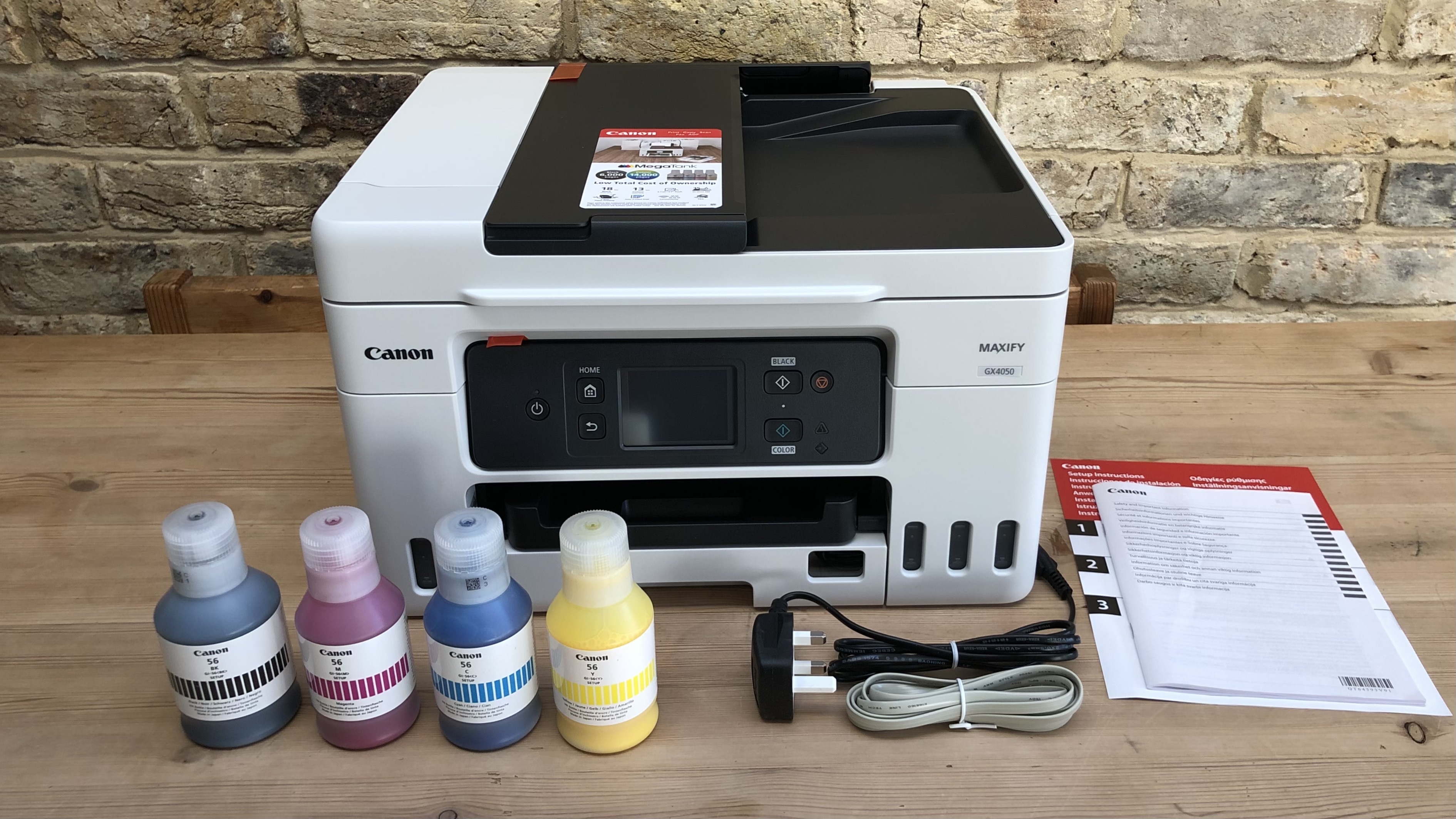
Canon MAXIFY GX4020: Final verdict
The Canon MAXIFY GX4020/GX4050/GX4060 has all the right features for the SMB or home office. It’s not especially fast, but it has enough paper and ink capacity to minimize printer down time. It’s a pity there’s no USB Host port or NFC card reader, but that’s more than made up for by its unusually wide media compatibility.
With the ability to print on anything from fabric to paperboard, this all-in-one has broad appeal. Yes, it is rather expensive for an inkjet, but that’s justified by the generous amount of ink in the box and the very low ongoing consumables cost. The Epson EcoTank ET-3850 offers a similar package for less money, but Canon’s superior design lets you print on card and includes a touchscreen giving it a decisive edge in our view.
If you don’t need the speed of a laser and you intend to print more than just text documents, this could be your perfect AOI printer.
We've ranked the best small business printers.

Jim has been evaluating printers for more than twenty years and has, to date, written over a hundred reviews for TechRadar Pro. From pocket printers to industrial dye sublimation, Jim has been there, run the tests and printed the t-shirt. His expertise extends to consumables (paper, ink, toner) and his printer buying guides make it easy to compare these essential peripherals.
